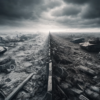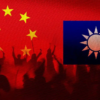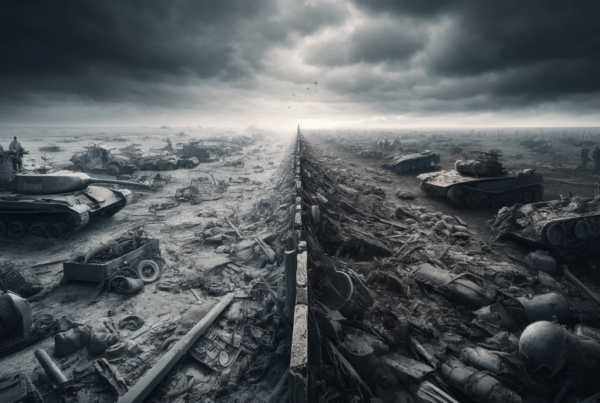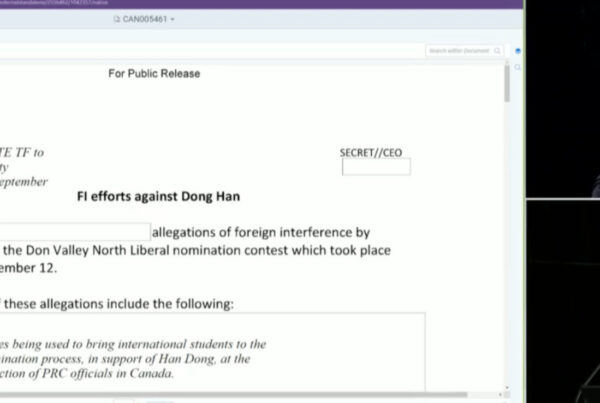It is still premature to pronounce the death of the tank, although Canada’s Department of Defence may be eager to do so. Canada has 114 obsolete Leopard 1 tanks which are rapidly reaching the end of their service lives. Most are in storage, except for a squadron of 19 tanks used to keep the skills associated with their use from becoming altogether absent. By adhering to the idea that the day of the tank is gone, we have an excuse not to buy any more. Like the Federal Progressive Conservative Party, rumors of the death of the tank are greatly exaggerated, but both are likely to find themselves restricted to secondary/specialist roles for decades to come.
In 1978, the author was one of the hundreds of Canadian soldiers who saw the last hurrah of the Centurion Tank. These had been in Canadian service for over 20 years, and it was evident that their day was fast ending. A squadron of 19 tanks rumbled out of the hangers where they were maintained to travel about five kilometres to take part in a live fire demonstration; only four made it to their appointed station – where they fired with all the accuracy and speed that Centurions in other armies had demonstrated so many times. Their task completed, the remaining quartet departed but all broke down within a few hundred metres.
It had long been evident that a replacement was badly needed, but even in the mid-1970s, arguments were being raised that the Canadian Army should really be earmarked for ‘peacekeeping’ and for light reaction forces, and didn’t really need new tanks. However, it was eventually decided to replace some 300 Centurions with 114 Leopard 1 Tanks and a number of wheeled ‘tank trainers’ called the Cougar – basically a city bus on steroids with a big gun on top. Typically, too little, almost too late, and the Leopard 1 design we picked was already nearing obsolescence.
The Leopard 1 was a fast and reliable German-designed tank that was popular with many NATO armies. However, it was designed in the late 1950s and began manufacture in 1965. By 1978, it was already clear that it was a second-line tank. The Leopard 1’s speed (it could reach about 65 KPH) was a product of thin armor – about 80mm at its thickest. Even the Sherman tanks the Canadian army used in WW 2 were better protected. Also, the Israeli experience in dealing with mass Soviet-style attacks in the 1973 Yom Kippur War showed that a tank needed to be more robust than this, as many of their Centurions (whose thickest armor was about 150mm) had been knocked out.
When we ordered the Leopard 1s, Germany had already started production of the Leopard 2, a highly advanced tank whose top speed rivaled its predecessor, but whose armor protection was far superior – incorporating spaced layers of high grade steel, ceramic honeycomb, and other materials. The Israelis, drawing on their extensive experience with tank battles in 1967 and 1973, were starting production of their new Merkava tank; slower than the Leopard family, it was designed to destroy many times its numbers in attacking tanks. While the Americans were only starting production of their magnificent Abrams tank, updated versions of the British Chieftain – whose protection and firepower also much exceeded that of the Leopard 1 – were also available.
In any event, if we wanted to order new tanks now, there is a supply of superb designs to choose from. But, do we want them?
Richard Simpkin was one of the greatest military theorists of the 20th Century (which means that few people outside of some US/NATO staff colleges and the Soviets have heard of him). One of his more thought-provoking books was Race to the Swift (Brassey’s London, 1986), which dwelled on maneuver theory and principles, and their likely evolution into the 21st Century. Like many other polymaths, Simpkin could casually toss off a couple of asides when pursuing a thought that might be mined for insight by a college of scholars and essayists later.
One of Simpkin’s theories was a wave cycle of the evolutionary progress of key weapons systems. Essentially, a new concept could expect to first appear in small numbers as a revolutionary idea, feel its way forward, reach the acme of its design in 30—50 years during which it comes to dominate its environment, then fade from dominance to increasingly specialist roles as a new family of weapons systems/propulsion methods enters the field.
For example, the triple gun-decked ship of the line first appeared in the 1770s, and became the dominant capital ship of the Napoleonic era. But in the 1820s, the first steam driven warships appeared and soon ended their reign. By 1862, the steam frigates role as the leading capital ship was eclipsed by the ironclad warship; which then found themselves eclipsed by the true dreadnought battleship in 1908.
In 1942, it became all too obvious that the battleship’s dominance was ended – and the lonely quartet still in service 50 years later had spent decades in a specialist role (shore bombardment) with the US Navy. The aircraft carrier’s reign as the dominant capital ship became increasingly threatened by the cruise missile armed nuclear submarine in the 1980s. Currently, the massive US fleet carriers are desperately fighting against their loss of pride of place in the navies of the world (much as battleship admirals resented the upstart carrier commanders in the 1930s).
The tank first emerged as a clumsy prototype in the First World War, and was hardly a decisive instrument of land combat until the Second World War – where it came to dominate the battlefield, provided that it was closely guarded by infantry, supported with plentiful artillery and had field engineers in attendance. In short, the tank didn’t actually dominate the battlefield so much as it became the definitive instrument of operational mobility by being the centerpiece of a formation with armored infantry, self-propelled artillery and other mechanized assets.
Tanks, for those unfamiliar with them, have a number of strengths; firepower, protection, mobility, and shock action – lying under a bush at dawn in a field as 19 fast moving Leopard 1s roared past (two within arms reach) is a terrifying memory of the author that sometimes comes back with special clarity at 3:00 AM. However, tanks make heavy demands on logistics in terms of fuel and ammunition; need a train of repair crews close behind; and their size, weight and noise makes them especially noticeable.
In many actions, in many wars since 1939, tanks have been an irresistible force and mechanized units remain as the most decisive element on the battlefield. US Abrams tanks set a speed record for the rapidity of an offensive advance in their recent drive on Baghdad, and proved the worth of well-designed tanks once more.
Nor is tank use exclusive to the US; China has two new designs on the market, France is producing LeClerc tanks for export, Germany has a new model of the Leopard 2 out, Japan just finished production of a new tank for its defence forces, South Korea is producing a new model, and the Russians are displaying their new Black Eagle design. In the aftermath of the recent Gulf War, China and Russia have been publicly mulling over giant new tanks with a 152mm high velocity gun as the main armament.
Simpkin thought that helicopter formations would overtake mechanized units as the main instrument of operational maneuver and decision, but this hasn’t happened yet. Indeed, the helicopter has been readily conscripted into forming a part of existing armored formations – most US mechanized divisions have a couple of battalions of helicopters in their order of battle.
It is far too soon to announce the death of the tank. Partisans of a Canadian Army stripped down to act only as “peacekeepers” should also bear in mind that tanks and heavy armoured personnel carriers have made significant contributions to many missions in the 1990s. There is nothing like a well-handled tank to inspire caution among those who think that they can otherwise push soldiers with blue berets around. Also, the smoking remains of Iraq’s tanks around Baghdad can illustrate the fate of those who attempt to stop a modern force by using antiquated equipment.
We need new tanks, perhaps just enough so that we have one armored regiment, but we need some. Let’s keep them on the shopping list.








